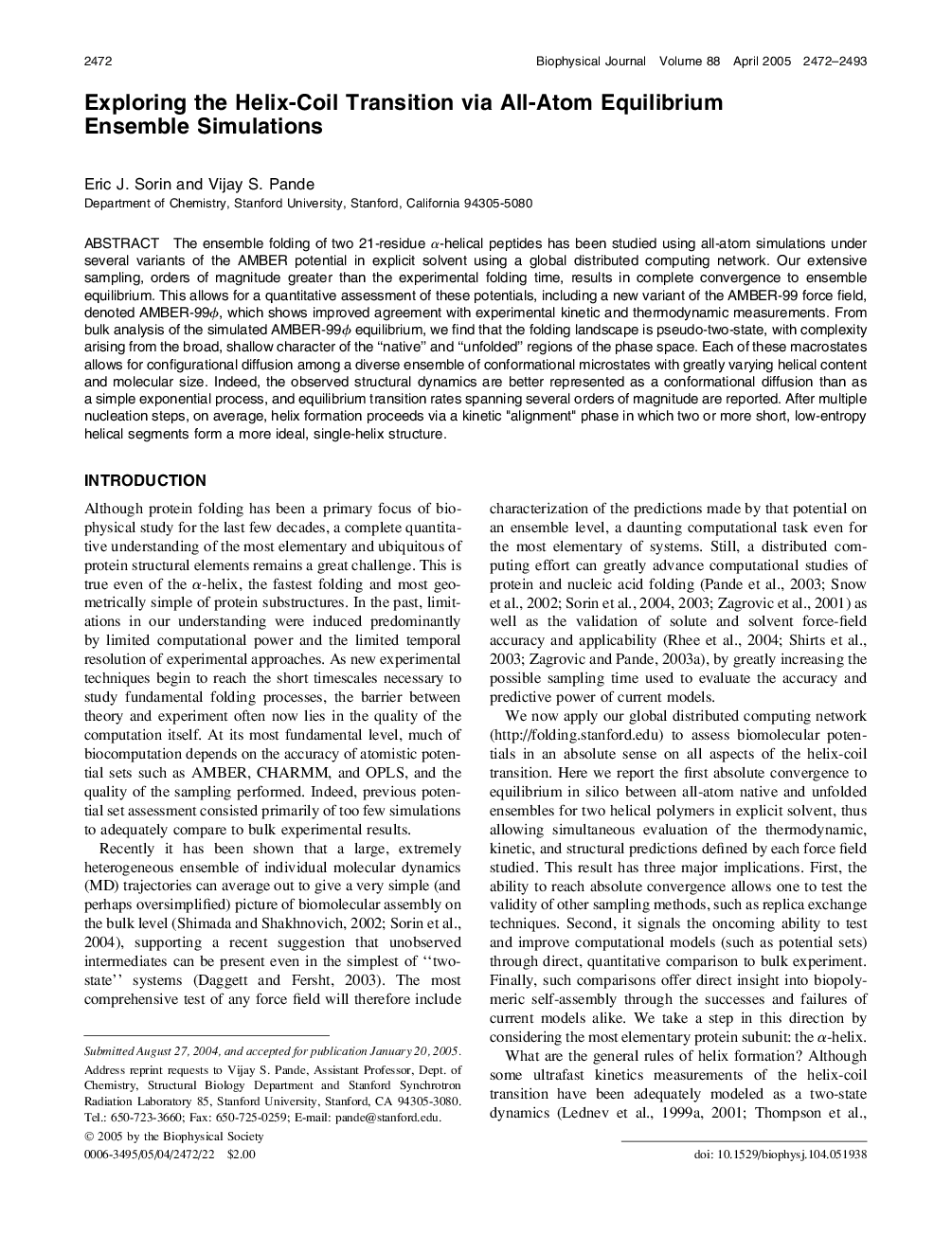| Article ID | Journal | Published Year | Pages | File Type |
|---|---|---|---|---|
| 1959544 | Biophysical Journal | 2005 | 22 Pages |
The ensemble folding of two 21-residue α-helical peptides has been studied using all-atom simulations under several variants of the AMBER potential in explicit solvent using a global distributed computing network. Our extensive sampling, orders of magnitude greater than the experimental folding time, results in complete convergence to ensemble equilibrium. This allows for a quantitative assessment of these potentials, including a new variant of the AMBER-99 force field, denoted AMBER-99ϕ, which shows improved agreement with experimental kinetic and thermodynamic measurements. From bulk analysis of the simulated AMBER-99ϕ equilibrium, we find that the folding landscape is pseudo-two-state, with complexity arising from the broad, shallow character of the “native” and “unfolded” regions of the phase space. Each of these macrostates allows for configurational diffusion among a diverse ensemble of conformational microstates with greatly varying helical content and molecular size. Indeed, the observed structural dynamics are better represented as a conformational diffusion than as a simple exponential process, and equilibrium transition rates spanning several orders of magnitude are reported. After multiple nucleation steps, on average, helix formation proceeds via a kinetic “alignment” phase in which two or more short, low-entropy helical segments form a more ideal, single-helix structure.
